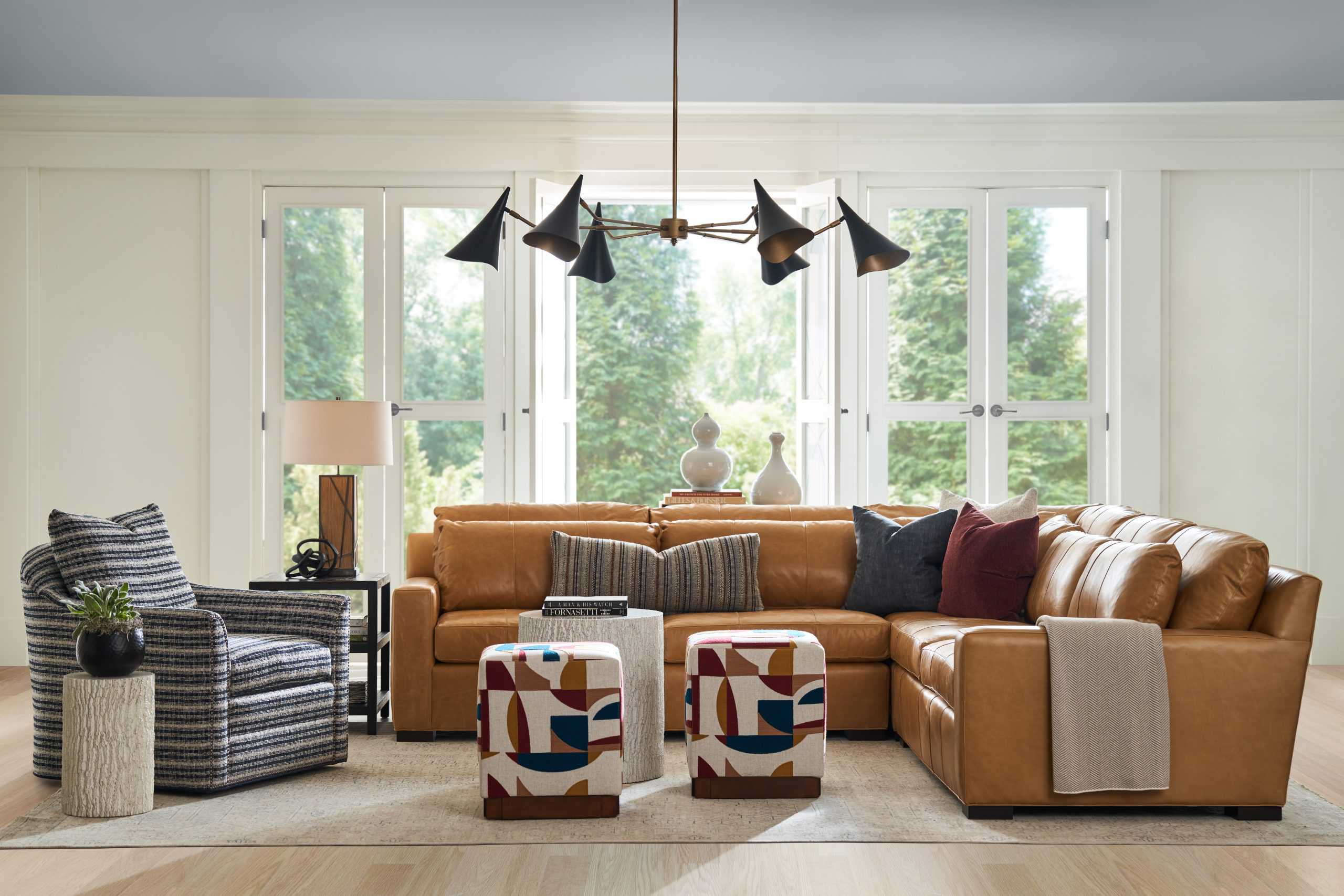Have you ever wondered if a furniture piece you own is a good candidate for reupholstery?
Each week, we get several inquiries from folks who have perhaps inherited a chair from a family member, or maybe are just ready for a change after living with the same sofa for 20 years.
We absolutely love giving new life to a tired piece of furniture – not only is it more environmentally sustainable than purchasing new, it also brings a real sense of character to a home to have pieces from different eras. Not to mention that most furniture built “back in the day” is of much better quality than much of what is on the market today.
Sometimes reupholstery is the right option, but sometimes, it just doesn’t make sense. The total cost to recover a piece can be significant, depending on the size, intricacy, and of course fabric pricing. We always want to make sure our clients are getting good value for their money, which is why we have no problem recommending purchasing new instead if we don’t feel the cost vs. value is there.
So, here are some qualifying questions that we use to determine whether reupholstery is the right path to embark on.
1. Is it good quality?
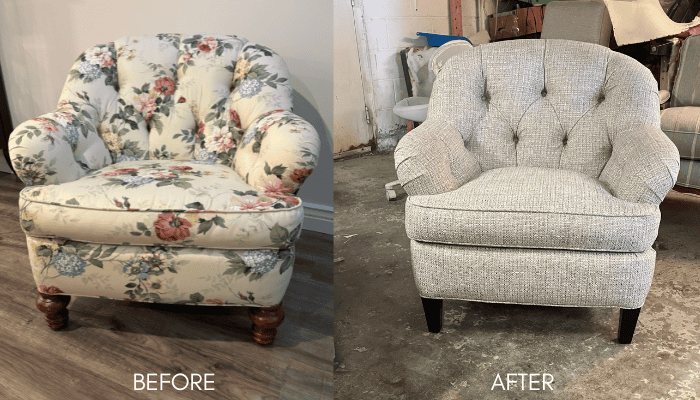
First and foremost, we always want to examine the construction of a furniture piece when determining whether or not reupholstery is the right path. Both the labour cost and price per yard of fabric can quickly add up, which is why it’s important to be sure the value is there. We can usually determine base level quality based on the brand and where the piece was manufactured.
Generally speaking, we would not recommend reupholstering a piece that does not have a hardwood frame and a sturdy spring system. You’ll also want to consider the condition of the cushions – it’s okay (and honestly expected) if they need a little TLC, but keep in mind that completely replacing feather/down cushions will cost significantly more than foam.
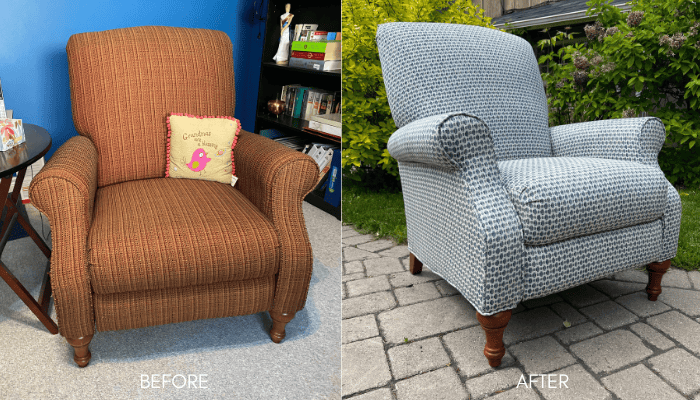
2. Do you love the structure of the piece?
If you’re considering going forward with a reupholstery project, it’s imperative that you LOVE the piece. This might seem obvious, but we sometimes find that customers come into the shop inquiring about recovering a sofa or chair they have inherited or have had forever, but are lukewarm on. They like it but don’t love it… and there’s nothing wrong with it, so they feel like they should be keeping it.
While we are big advocates for sustainability and reusing (and taking good care of) what you have, there is also nothing wrong with donating a piece you feel lukewarm about and starting fresh. You shouldn’t feel forever tied to a piece of furniture that you don’t love, let alone invest a significant sum of money into it. Sometimes it’s okay to let things go!
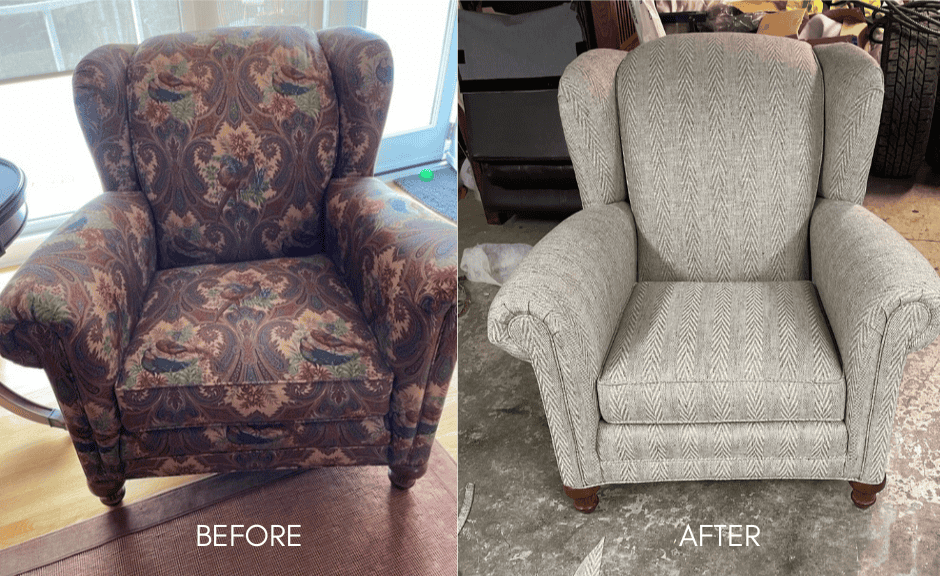
Something to consider if you do love the lines of your furniture piece, is that it may not be possible to purchase something new in a similar style, especially if it leans toward traditional. In this case, reupholstery is a fantastic option.
Details that can easily be altered during the reupholstery process include: adding or removing a skirt, changing the style of the leg (providing it is not part of the frame), and the finish of any exposed wood. Arm shape can also be changed, but you’ll want to be mindful that the overall look still feels cohesive. We love to add dressmaker details such as beautiful trim or piping – this gives your piece the feeling of being truly bespoke.
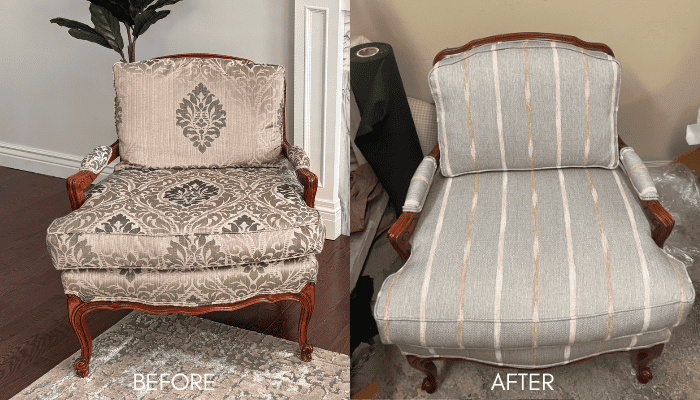
3. Does it have sentimental value?
We are often approached about revitalizing antique or sentimental pieces (usually chairs) that belonged to someone special. This is a fantastic reason to invest in the repair and/or reupholstery of an item, and truthfully these are some of our favourite projects to work on! We absolutely love seeing the reactions from clients when they see their loved one’s piece revitalized.
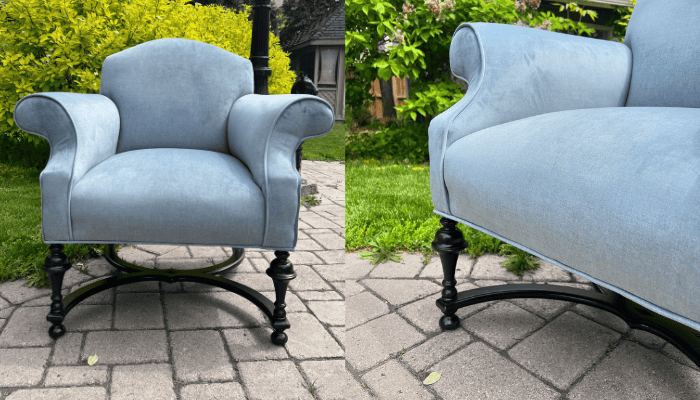
Whether you’d like to keep a classic and traditional look and feel, or lean into something more modern or funky such as an animal print, this is a type of project we almost always recommend going forward with. There is something very special about being able to enjoy a piece that has been passed down amongst generations – but given your own personal twist.
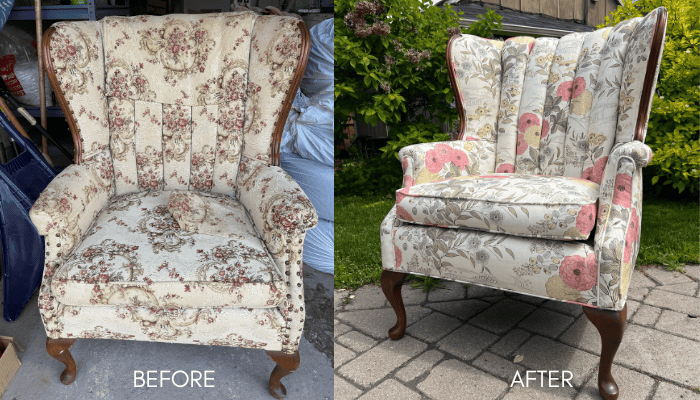
4. Does it require a lot of fabric?
Generally speaking, a chair with a higher ratio of exposed wood to fabric (or simply less fabric) will cost less to reupholster. This means you can either choose to save on the project as a whole, or splash out on a more expensive fabric. On average, a sofa might take anywhere from 15-17 yards, a wing chair 7-8 yards, an exposed wood chair 3-5 yards, and dining seats 1/2 yard each. When you begin to multiply cost per yard, you can see that you certainly get more bang for your buck in terms of impact vs. cost when the job requires less fabric.
A gorgeous show wood chair can create just as much (or more) impact in a space than a large wing or club chair, but cost roughly half the price.
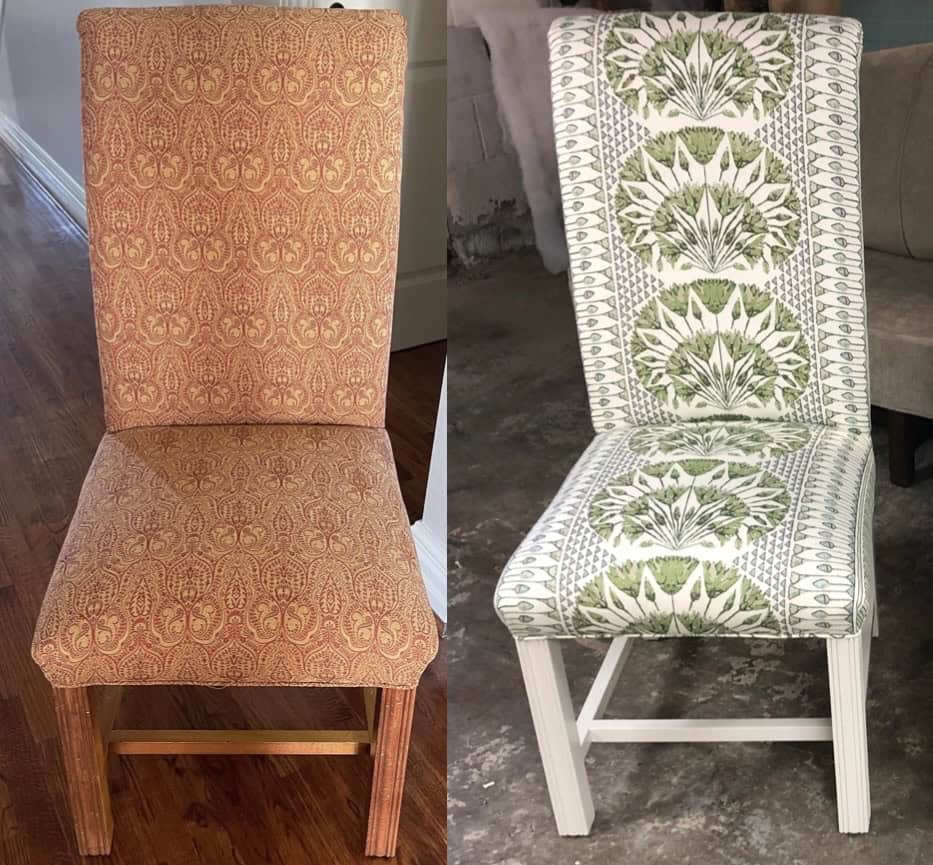
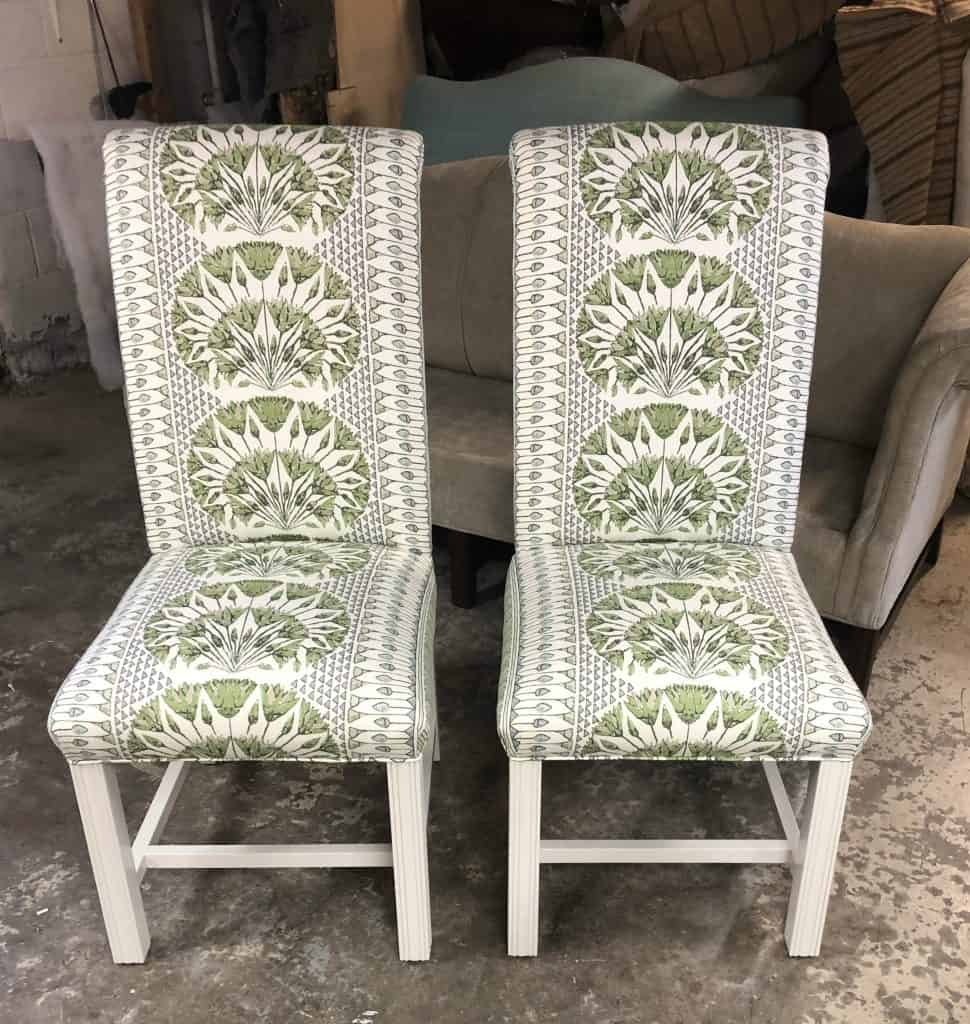
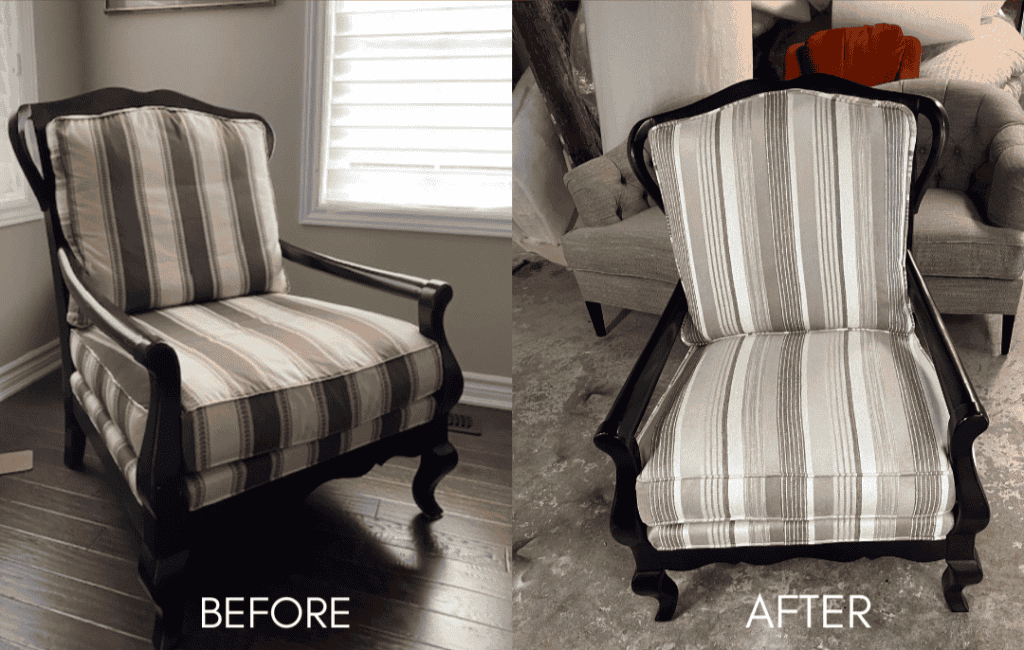
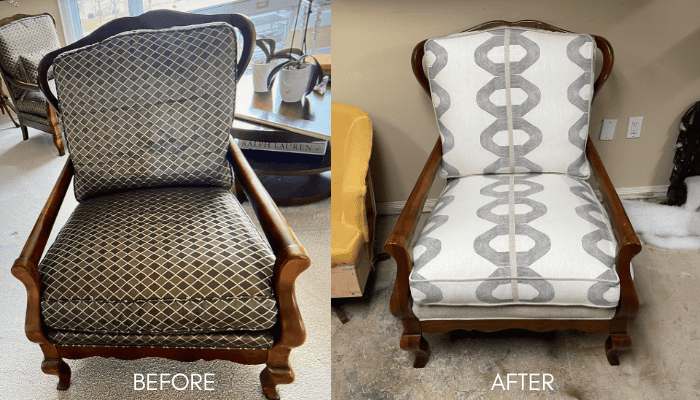
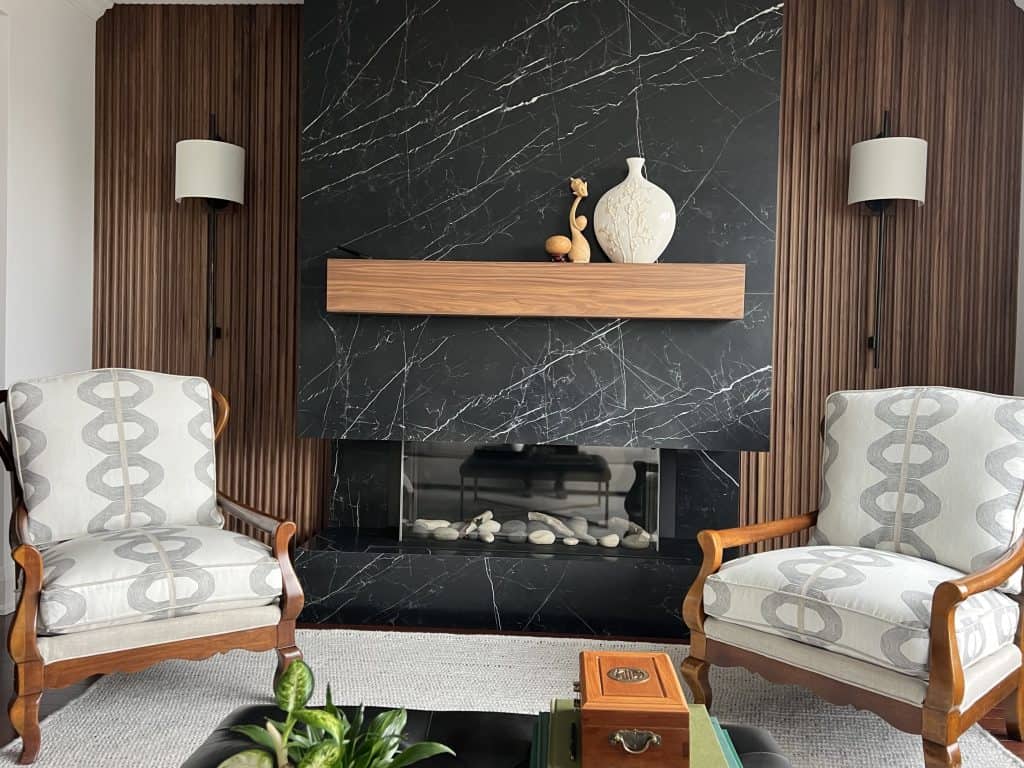
So, if you think you may have a candidate for reupholstery in your midst, please feel free to reach out to [email protected] or stop by the shop. We would be happy to provide you with a complimentary consult in our showroom, and guide you through our extensive fabric library within our dedicated Design Studio.
We carry an array of brands including, but not limited to: Kravet, Thibaut, Stout, Maxwell, JF Fabrics, Alendel, Romo, Stroheim, & more. Our team of experts will assist you in choosing the perfect fabric for your project, and we are able to work within a wide array of budgets.

